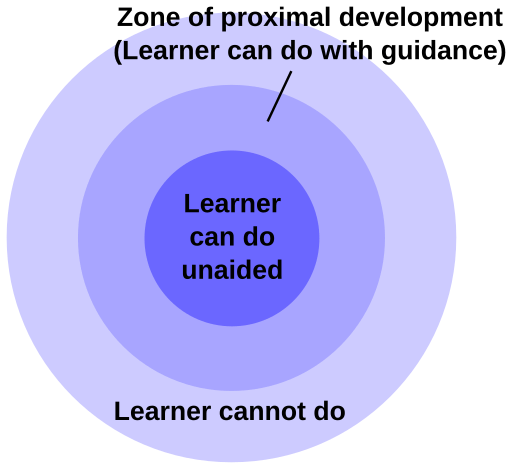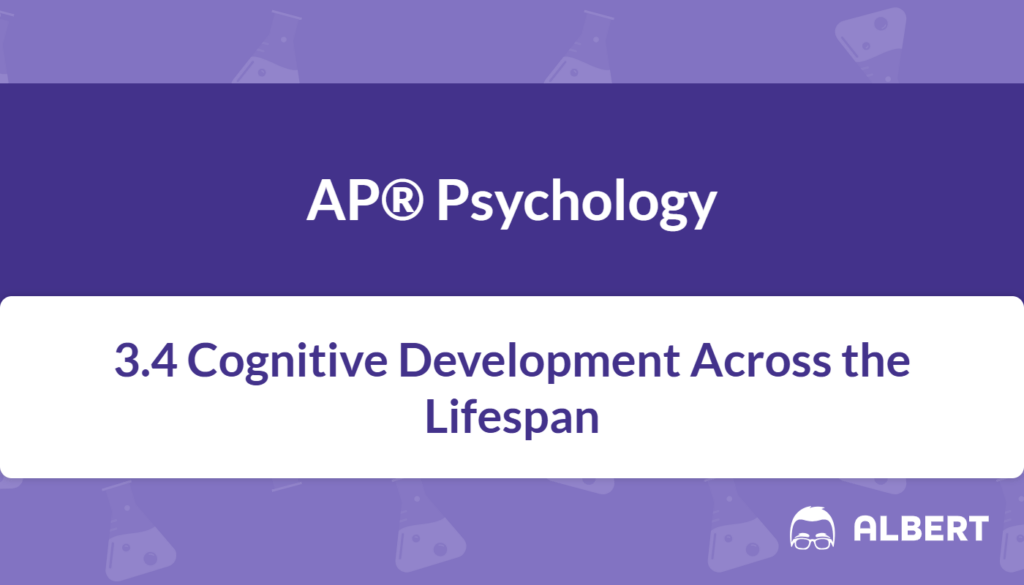What We Review
Cognitive development refers to the growth and change in intellectual skills over the course of life. It addresses how people learn, think, solve problems, and gain knowledge at different ages. Studying cognitive development across the lifespan is essential because it provides insight into how individuals adapt to new information and situations. Several theorists have explored this concept, including Piaget, who emphasized distinct stages of thought processes, and Vygotsky, who highlighted the power of social interaction in learning.
Below is an overview of important theories, practical examples, and key vocabulary for anyone interested in understanding the steps of cognitive development.
Theories of Cognitive Development
Piaget’s Stages of Cognitive Development
According to Piaget, children develop mental frameworks, called schemas. These schemas evolve through processes known as assimilation (adding new information to an existing schema) and accommodation (modifying a schema to fit new information). These continual adjustments help children gradually refine how they see the world.
The Four Stages of Piaget’s Theory
Piaget proposed that children move through four major stages. Each stage highlights different skills and ways of thinking.
Sensorimotor Stage
- Age Range: Infancy through toddlerhood
- Key Concept: Object permanence (the understanding that objects continue to exist even when hidden)
During the sensorimotor stage, infants explore their environment through their senses and actions. They learn about object permanence, which is a crucial milestone because it shows an awareness that objects do not vanish when out of sight.
Example Problem: The Hidden Toy
- A baby plays with a small rattle.
- The rattle is placed under a blanket.
- The child first looks confused, but then lifts the blanket to find it.
Step-by-Step Solution:
- Step 1: Observe the baby noticing the rattle before it disappears.
- Step 2: Notice the baby’s reaction when the rattle is hidden.
- Step 3: Recognize that the baby lifting the blanket shows an understanding that the rattle still exists.
- Conclusion: This demonstrates the emergence of object permanence.
Preoperational Stage
- Age Range: Toddlerhood through early childhood
- Key Concepts: Mental symbols, pretend play, egocentrism, conservation tasks
Children in the preoperational stage can represent the world through words and images. However, they often struggle with understanding perspectives other than their own (egocentrism) and grasping concepts such as conservation (the idea that quantity remains the same even if the appearance changes).
Example Problem: Conservation of Liquid
- Take two identical cups, each containing the same amount of water.
- Pour the liquid from one cup into a taller, narrower glass.
- Ask the child whether the amounts of liquid are still equal.
Step-by-Step Solution:
- Step 1: Start with the two identical cups side by side.
- Step 2: Carefully pour the water from one cup into a taller glass.
- Step 3: Ask the child if both still contain the same volume of water.
- Conclusion: Many children in this stage will say the taller glass has “more” water, showing difficulty with conservation.
Concrete Operational Stage
- Age Range: Early childhood through late childhood
- Key Concepts: Logical reasoning, systematic thinking for concrete tasks
Children in the concrete operational stage overcome many of the errors seen in the preoperational stage. They can think logically about concrete events and understand concepts such as classification and reversibility. However, systematic thinking about all possible outcomes is still developing.
Example Problem: Grouping Objects
- Present a child with a mix of shapes: squares, circles, and triangles.
- Ask the child to sort them by shape and then by color.
Step-by-Step Solution:
- Step 1: Show the shapes in a random pile.
- Step 2: Instruct the child to group them by shape first.
- Step 3: After the first grouping, ask the child to group them by color.
- Conclusion: At this stage, children typically perform these tasks correctly, showing logical thought processes.
Formal Operational Stage
- Age Range: Late childhood through adulthood
- Key Concepts: Abstract thinking, hypothetical and deductive reasoning
Those who reach the formal operational stage can consider abstract concepts and complex possibilities. They can also form hypotheses and systematically test them. However, Piaget noted that not everyone reaches this stage fully.
Example Problem: Imagining the Future
- Ask a student to predict how society might change if people could live twice as long.
- Encourage thinking about potential economic, social, and environmental impacts.
Step-by-Step Solution:
- Step 1: Pose the hypothetical scenario of extended lifespans.
- Step 2: Guide the student to consider the possible consequences (housing, resources, healthcare).
- Step 3: Notice the ability to think beyond current realities.
- Conclusion: Success in this task reflects advanced, abstract thought processes.
Vygotsky’s Theory of Cognitive Development

Vygotsky emphasized the importance of social interaction and culture in learning. He believed children learn best when guided by a more skilled partner. This concept is captured in the zone of proximal development (ZPD), defined as the gap between independently performing a task and succeeding with help.
Example Problem: Reading with Assistance
- A child struggles to read slightly above their independent reading level.
- An adult provides hints and reads alongside the child.
Step-by-Step Solution:
- Step 1: Identify a text that is challenging but not impossible for the child.
- Step 2: Offer support, such as sounding out words and asking guiding questions.
- Step 3: Observe the child gradually become more comfortable and confident.
- Conclusion: The ZPD is demonstrated as the child’s performance improves with help, illustrating Vygotsky’s idea of “learning by interaction.”
Cognitive Development in Adulthood
Cognitive development across the lifespan does not stop when adolescence ends. Adults experience changes in thinking abilities, particularly as they age.
Changes in Cognitive Capabilities
- Crystallized intelligence involves knowledge gained from experience, which remains stable and can even increase over time.
- Fluid intelligence is the capacity to solve new problems without relying on prior knowledge. It often declines with age.
Lifelong learning plays a key role in maintaining cognitive health. Adults who stay mentally active can maintain higher levels of cognitive performance and problem-solving skills.
Cognitive Disorders in Adults
Conditions such as dementia significantly impair thinking, memory, and reasoning. Dementia can involve gradual memory loss and reduced ability to perform daily tasks. Early detection is crucial for medical support and improved quality of life.
Example Problem: Recognizing Cognitive Decline
- An older family member frequently forgets the names of close friends and loses track of time.
- They start missing appointments or struggle with once-familiar tasks.
Step-by-Step Solution:
- Step 1: Observe if forgetfulness is becoming more frequent and affecting daily life.
- Step 2: Note changes in mood or personality that accompany these memory lapses.
- Step 3: Consider consulting a medical professional for evaluation.
- Conclusion: Identifying these symptoms early can help prevent further deterioration and promote a better support system.
Practical Applications of Cognitive Development Theory
- Parents can use Piaget’s insights to create activities that match their child’s developmental stage.
- Teachers can use Vygotsky’s concept of scaffolding, offering just enough guidance so students progress without becoming discouraged.
- Eldercare programs can foster cognitive stimulation through puzzles and social engagement.
When people understand Piaget’s cognitive development and Vygotsky’s cognitive development, they can better adapt teaching methods to individual needs. This knowledge may also help caregivers and parents choose age-appropriate activities to challenge and encourage different stages of growth.
Quick Reference Chart
Below is a convenient chart of core vocabulary related to the steps of cognitive development.
| Vocabulary Term | Definition |
| Cognitive Development | The process of growth and change in intellectual capabilities throughout life. |
| Schema | A mental framework that helps organize and interpret information. |
| Assimilation | Integrating new information into existing schemas. |
| Accommodation | Changing an existing schema to incorporate new information. |
| Object Permanence | Understanding that objects continue to exist even when not seen. |
| Egocentrism | The tendency to see the world from one’s own perspective. |
| Zone of Proximal Development | The difference between what a learner can do without help and what they can achieve with guidance. |
| Crystallized Intelligence | Knowledge that remains stable and can be drawn upon with experience. |
| Fluid Intelligence | The ability to solve new problems independent of prior knowledge, which typically declines with age. |
Conclusion
Cognitive development is a fascinating journey that unfolds from infancy into old age. Piaget’s four stages illustrate shifts in children’s ability to reason logically and think abstractly, while Vygotsky’s theory emphasizes how social contexts speed or slow these changes. In adulthood, abilities like crystallized intelligence remain steady, but fluid intelligence may decline. With an awareness of these processes, educators and caregivers can adopt targeted strategies to support cognitive growth for every individual.
Understanding cognitive development across the lifespan offers a deeper appreciation of how people learn and adapt. Whether planning activities for young children or providing support for older adults, being mindful of these theories benefits learners of all ages.
Sharpen Your Skills for AP® Psychology
Are you preparing for the AP® Psychology test? We’ve got you covered! Try our review articles designed to help you confidently tackle real-world AP® Psychology problems. You’ll find everything you need to succeed, from quick tips to detailed strategies. Start exploring now!
- Physical Development: AP® Psychology Review
- Psychology of Sexual Orientation and Gender Diversity: AP® Psychology Review
- Language and Communication: AP® Psychology Review
Need help preparing for your AP® Psychology exam?
Albert has hundreds of AP® Psychology practice questions, free response, and full-length practice tests to try out.








